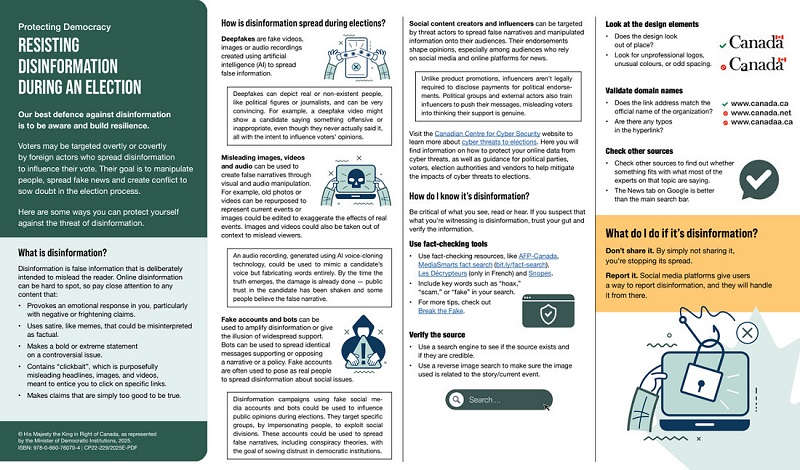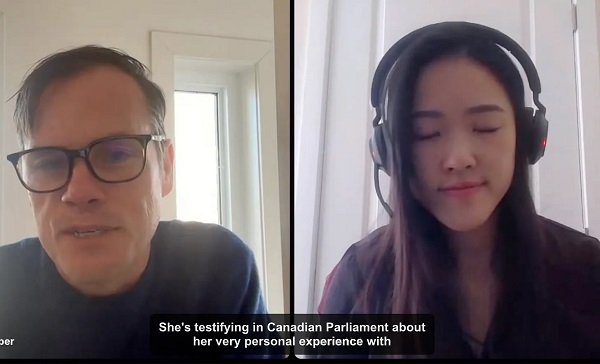Energy
The grid is the ‘most complicated machine’ ever built, and AI is stressing it out

News release from The Deep View
| At the beginning of the year, the International Energy Agency (IEA) found that, in 2022, data centers consumed around 460 terawatt-hours (TWh) of energy, or around 3% of global electricity use. The IEA further predicted that this number will likely more than double to around 1,000 TWh by 2026 — roughly the equivalent of Japan — due, at least in part, to the energy demands of artificial intelligence. |
| Many of the massive investments being made around the world in AI have to do with building more data centers, even as existing data centers are consuming more energy than ever before. What this means for carbon emissions is complicated (since it depends on the cleanliness of the grid at each data center location), but today, we’re talking about the grid. |
|
| What’s going on here is that, driven by spiking data center demand, electricity demand is currently experiencing a prolonged surge. Mariko McDonagh Meier, the chief revenue officer for energy storage developer Convergent, told me that this is significant, as energy demand had been relatively flat for the past 20+ years. |
|
| The details: Grid operators, according to Meier, have the basic charge of ensuring the grid is reliable. This means managing electricity supply and demand in real-time. If a massive machine — or data center — comes online and its accompanying demand hasn’t been properly accounted for, it could “break a lot of stuff.” |
| The reality, according to Meier, is that “the grid is the most complicated machine that’s ever been built, truly, because it is an interconnected machine.” The reason behind this interconnection has to do with built-in fail-safes; local problems can be solved by drawing on power from other places. This enhances the reliability of each interconnected grid (the U.S. and Canadian power grids, for example, are connected at 37 different points for this very reason). |
| The result of this interconnection — coupled with a lack of storage capabilities built into the grid — is that the grid has to be constantly balanced. This data center-driven increase then poses a significant challenge to grid operators, resulting additionally in delays for new data centers to come online. |
| In order to meet this surging demand, and in order to keep the grid reliable, the retirement dates of environmentally damaging coal plants are being pushed back in the U.S. |
|
| A big solution to this rather complex mess, according to Meier, involves solar plus storage tech (something that Convergent offers). Depending on the size of the solar array in question, the combination can be enough to power a data center, perhaps with a minimal connection to the grid — the result is cheaper, sustainable energy production that doesn’t impact grid reliability. |
Energy
Straits of Mackinac Tunnel for Line 5 Pipeline to get “accelerated review”: US Army Corps of Engineers


From the Daily Caller News Foundation
By Audrey Streb
The Army Corps of Engineers on Tuesday announced an accelerated review of a Michigan pipeline tunnel under the Straits of Mackinac following President Donald Trump’s declaration of a “national energy emergency” on day one of his second term.
Enbridge’s Line 5 oil pipeline is among 600 projects to receive an emergency designation following Trump’s January executive order declaring a national energy emergency and expediting reviews of pending energy projects. The action instructed the Army Corps to use emergency authority under the Clean Water Act to speed up pipeline construction.
“An energy supply situation which would result in an unacceptable hazard to life, a significant loss of property, or an immediate, unforeseen, and significant economic hardship,” if not acted upon quickly, the public notice reads.

U.S. President Donald Trump holds up a signed executive order as (L-R) U.S. Treasury Secretary Scott Bessent, Secretary of Commerce Howard Lutnick and Interior Secretary Doug Burgum look on in the Oval Office of the White House on April 09, 2025 in Washington, DC. (Photo by Anna Moneymaker/Getty Images)
“Line 5 is critical energy infrastructure,” Calgary-based Enbridge wrote to the DCNF. The company noted that it submitted its permit applications to state and federal regulators five years ago and described the project as “designed to make a safe pipeline safer while also ensuring the continued safe, secure, and affordable delivery of essential energy to the Great Lakes region.”
Army Corps’ Detroit District did not respond to the DCNF’s request for a copy of the notice or for comment.
The pipeline has been active since 1953 and extends for 645 miles across the state of Michigan, according to the Department of Environment, Great Lakes, and Energy website. Line 5 supplies 65% of the propane needs in Michigan’s Upper Peninsula and 55% of the state’s overall propane demand, according to Enbridge.
The project has faced legal trouble and permitting delays that have hindered its expansion. Michigan Democratic Gov. Gretchen Whitmer in 2019 used a legal opinion by Attorney General Dana Nessel to argue that the law that created the authority to approve the project “because its provisions go beyond the scope of what was disclosed in its title.”
The State of Michigan greenlit the project in 2021 and the Michigan Public Service Commission approved placing the new pipeline segment in 2023.
Trump has championed an American energy production revival, stating throughout his 2024 campaign that he wanted to “drill, baby, drill,” in reference to oil drilling on U.S. soil.
Daily Caller
Trump Executive Orders ensure ‘Beautiful Clean’ Affordable Coal will continue to bolster US energy grid


From the Daily Caller News Foundation
By
President Trump signed several executive orders Tuesday that will allow coal-fired power plants to stay online past planned retirement dates, identify coal resources on federal lands, and bolster the reliability of the electric grid. The orders may help the U.S. face an uncomfortable truth: wind turbines and solar panels can’t cost-effectively meet the U.S.’ growing electricity needs.
Coal provides an important source of the reliable and fuel-secure energy needed to keep the lights on. Our organization’s research shows that it is more affordable than wind and solar, too.
Mr. Trump’s executive orders will allow coal operators the flexibility to delay the premature closures caused in part by President Biden’s policies. A May 2024 rule from the Biden Environmental Protection Agency would have forced coal plants to spend billions on unproven technology to capture 90% of their carbon dioxide emissions. If coal plants failed to comply by 2035, they would be forced to shutter by 2039. The Trump EPA has since announced it will reconsider this rule, but the process could take years.
Coal should be allowed to help keep the lights on, especially because U.S. electricity demand is rising. The North American Electric Reliability Council’s 2024 long-term reliability assessment warns that “resource additions are not keeping up with generator retirements and demand growth” in most regions of the U.S. Coal produced 16% of the U.S.’ electricity in 2023, and coal, natural gas and petroleum together produced 60%. Nuclear comprised another 18%. It is folly to believe that the U.S. can meet its growing power demands while kneecapping a significant source of its baseload power.
Not only is reliable baseload power a must for the grid, but electricity generated by coal is less expensive than intermittent resources like wind and solar. It’s easy to understand why: the cheapest source of electricity is from plants that have already been built. Most of the U.S.’ coal fleet is like houses where the mortgages have been paid off. With no loans or interest left to repay, operating costs for existing coal plants typically consist of property taxes, insurance, labor, maintenance, and fuel.
Our organization models the full costs of building enough wind, solar, and battery storage to replace coal, natural gas, and nuclear plants. Powering a grid on wind, solar, and batteries is more expensive than coal because connecting wind turbines and solar panels to the grid entails system-wide costs like constructing new transmission lines. The intermittency of wind and solar means you need more power plant capacity to generate the same amount of power. More power plant infrastructure means more property taxes. More weather-dependent resources means more costs to managing the grid, like turning off wind turbines and solar panels when they are producing too much electricity for the grid to absorb — or conversely, ramping up natural gas generation on cloudy and still days when wind and solar aren’t producing.
Our research incorporates system-wide costs and shows that a realistic midpoint estimate for wind turbines is $72 per MWh. Electricity from new solar can range between $50 per MWh to $85 per MWh. Data from the Federal Energy Regulatory Commission shows that the average coal plant generated electricity for only $34 per megawatt-hour (MWh) in 2020 (the last year of available data). It could be even less expensive for coal plants to generate electricity if states and utilities allowed coal plants to operate more often. In 2024, the coal fleet generated electricity only about 43% of the time. If that approached 80%, costs could go as low as $29.
Keeping America’s “beautiful, clean coal” plants online is the right thing for the country and it is good news for consumers that the U.S. has recognized the electric grid’s reliability hole and decided to stop digging.
Isaac Orr is vice president of research, and Mitch Rolling is the director of research at Always On Energy Research, a nonprofit energy modeling firm.
-

 2025 Federal Election1 day ago
2025 Federal Election1 day agoRCMP Whistleblowers Accuse Members of Mark Carney’s Inner Circle of Security Breaches and Surveillance
-

 2025 Federal Election2 days ago
2025 Federal Election2 days agoMEI-Ipsos poll: 56 per cent of Canadians support increasing access to non-governmental healthcare providers
-

 2025 Federal Election2 days ago
2025 Federal Election2 days agoAI-Driven Election Interference from China, Russia, and Iran Expected, Canadian Security Officials Warn
-

 Health2 days ago
Health2 days agoTrump admin directs NIH to study ‘regret and detransition’ after chemical, surgical gender transitioning
-

 Business5 hours ago
Business5 hours agoChina, Mexico, Canada Flagged in $1.4 Billion Fentanyl Trade by U.S. Financial Watchdog
-

 2025 Federal Election1 day ago
2025 Federal Election1 day agoBureau Exclusive: Chinese Election Interference Network Tied to Senate Breach Investigation
-

 2025 Federal Election15 hours ago
2025 Federal Election15 hours agoTucker Carlson Interviews Maxime Bernier: Trump’s Tariffs, Mass Immigration, and the Oncoming Canadian Revolution
-

 Daily Caller4 hours ago
Daily Caller4 hours agoTrump Executive Orders ensure ‘Beautiful Clean’ Affordable Coal will continue to bolster US energy grid





